Atlantic hurricane season officially starts on Saturday June 1 and runs through November 30, and all indications are that it is going to be a very active one.
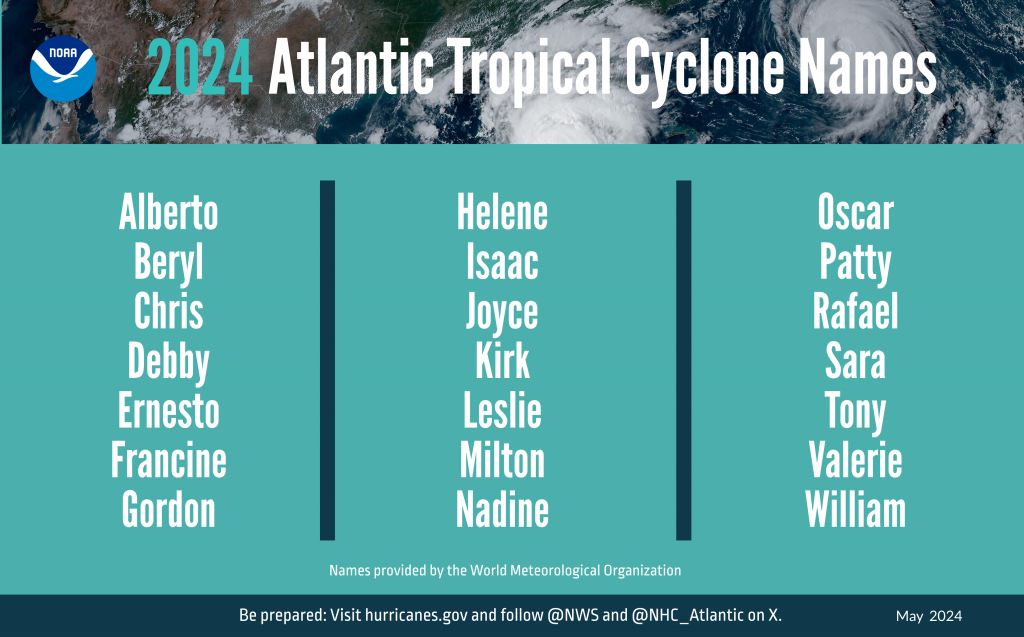
The 2023 season was an above normal season by the numbers, with 20 named storms, 7 hurricanes, and 3 major hurricanes, but the bulk of the activity occurred during a 7-week span between August 20 and October 6. The 20 named storms was tied with 1933 for the fourth most in a single season. Hurricane Idalia made the most headlines, hitting the Big Bend region of Florida area as a strong Category 3 hurricane on August 30 after peaking as a Category 4 storm earlier that day. Hurricane Lee was the strongest storm of the season, reaching Category 5 intensity. It passed west of Bermuda and for a time looked like a potential threat to New England, eventually making landfall as a strong extratropical storm in southwestern Nova Scotia on September 16. The only other storms to make landfall in the US were Tropical Storm Harold in southern Texas on August 22 and Tropical Storm Ophelia in North Carolina on September 23. With only 3 US landfalls, and just 1 at hurricane strength, this was a welcome change from 2021 when a total of 21 storms formed, 3rd most ever in a single season, and a total of eight of them made landfall in the United States.
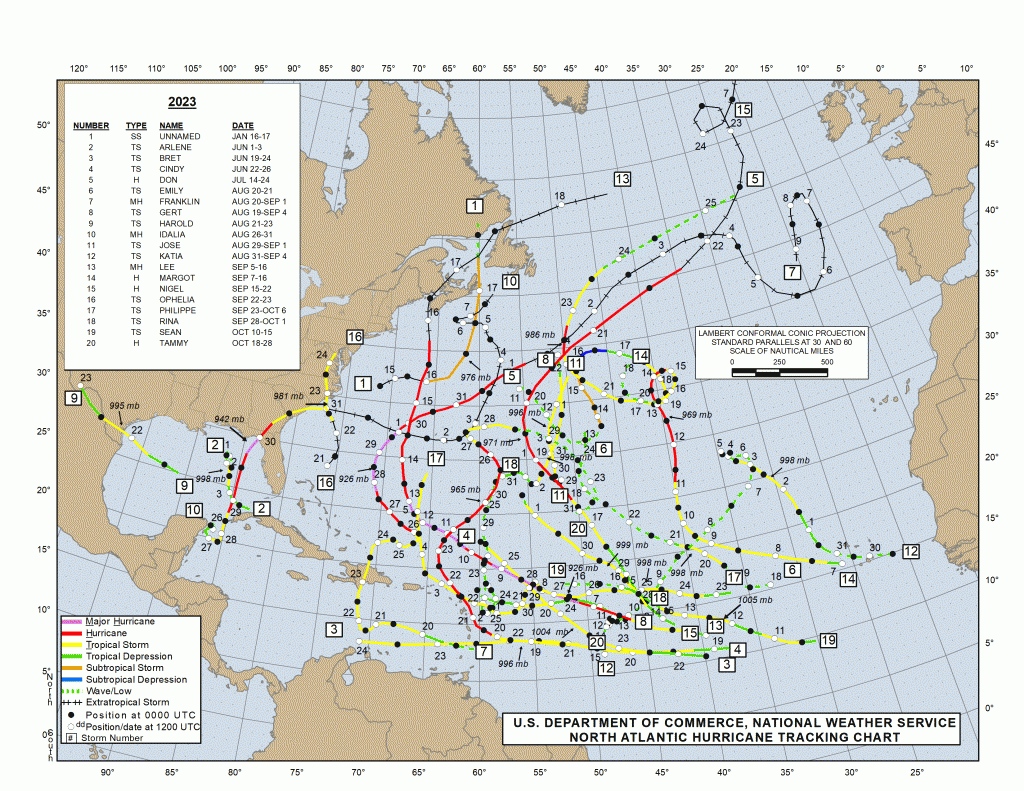
Forecasts for the upcoming season are nearly unanimous that a very active season is expected. Sea surface temperatures in the Atlantic are well above normal, near record highs in places, which would tend to lead toward a more active year. We also are transition from an El Nino to a La Nina in the Pacific, and that tends to increase Atlantic tropical activity. NOAA issued their seasonal hurricane outlook on May 23, and it calls for a 85 percent chance for an above normal season, a 10 percent chance for a near normal season, and a 5 percent chance for a below normal season. Most of the other hurricane outlooks issued by various outlets are also expecting an above to well above normal season, due to the signals mentioned above. An average season consists of 14.4 named storms, of which 7.2 become hurricanes and 3.2 become major hurricanes (Category 3 or higher on the Saffir-Simpson scale). NOAA’s forecast for this season calls for 17-25 named storms, 8-13 hurricanes, and 4-7 major hurricanes. The Tropical Meteorology Project at Colorado State, the first group to forecast how active a hurricane season would be, originally led by the late Dr. Bill Gray, will issue their updated forecast on June 11. Their initial forecast from April called for a well above average season, with 23 named storms, 11 hurricanes, and 5 major hurricanes.
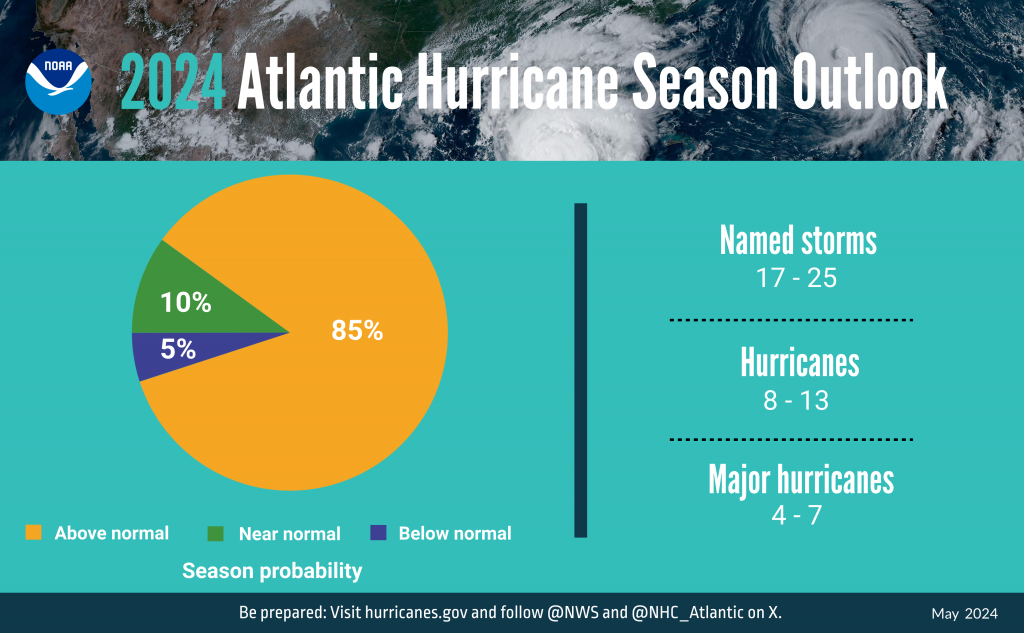
Despite the early start for the many of the past several years, the average date for the first named storm in the Atlantic is still June 20, and the average date for the first hurricane is August 11. Over 97% of all named storms in the Atlantic form between June 1 and November 30. Most early season storms tend to be on the weaker side. A hurricane hasn’t made landfall in the United States before July 1 since Hurricane Bonnie came ashore as a minimal hurricane near the Texas/Louisiana border on June 26, 1986.
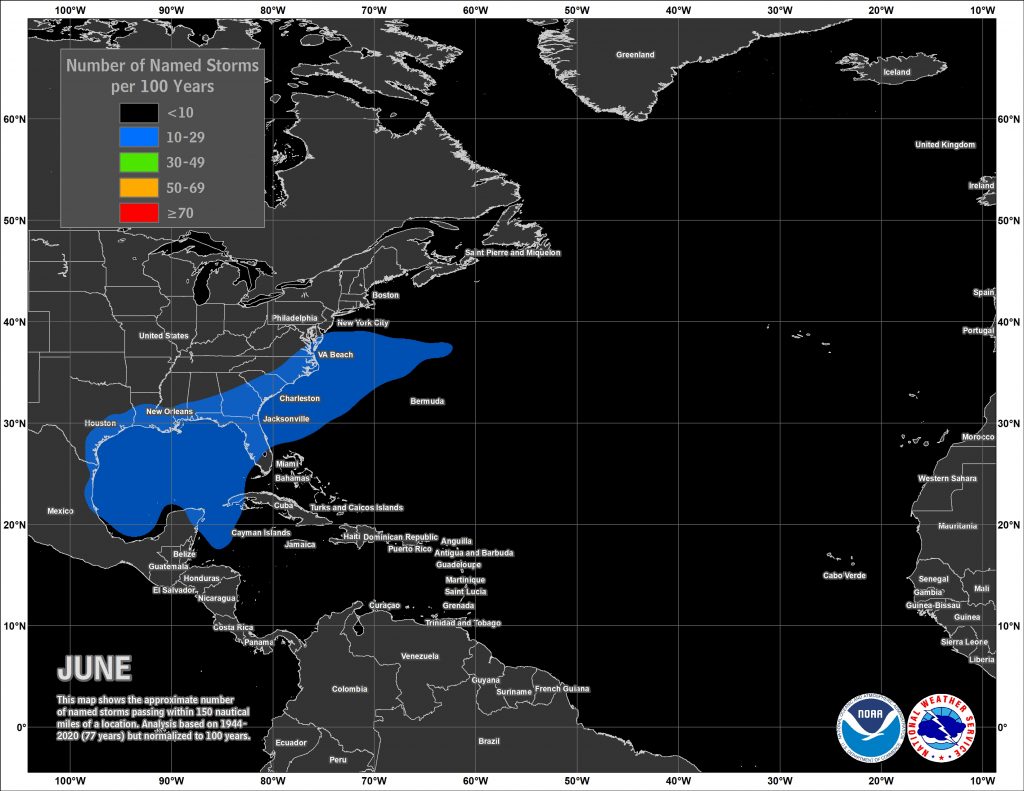
The number of storms that form in any given season has no correlation on how many storms (if any) will impact the United States. In 2010, 19 named storms were observed in the Atlantic, 12 of them became hurricanes, and 5 were major hurricanes. Only one storm made landfall in the United States, and that was Bonnie, which was a minimal tropical storm at landfall. In 1990, there were a total 14 named storms, 8 of them hurricanes and 1 major hurricane. Not a single one of them made landfall in the United States. On the flip side, only 7 named storms formed in 1992, and the first one didn’t develop until August 16. That storm, however, was named Andrew, and it made landfall just south of Miami as a category 5 storm. It only takes one storm to ruin your entire year.
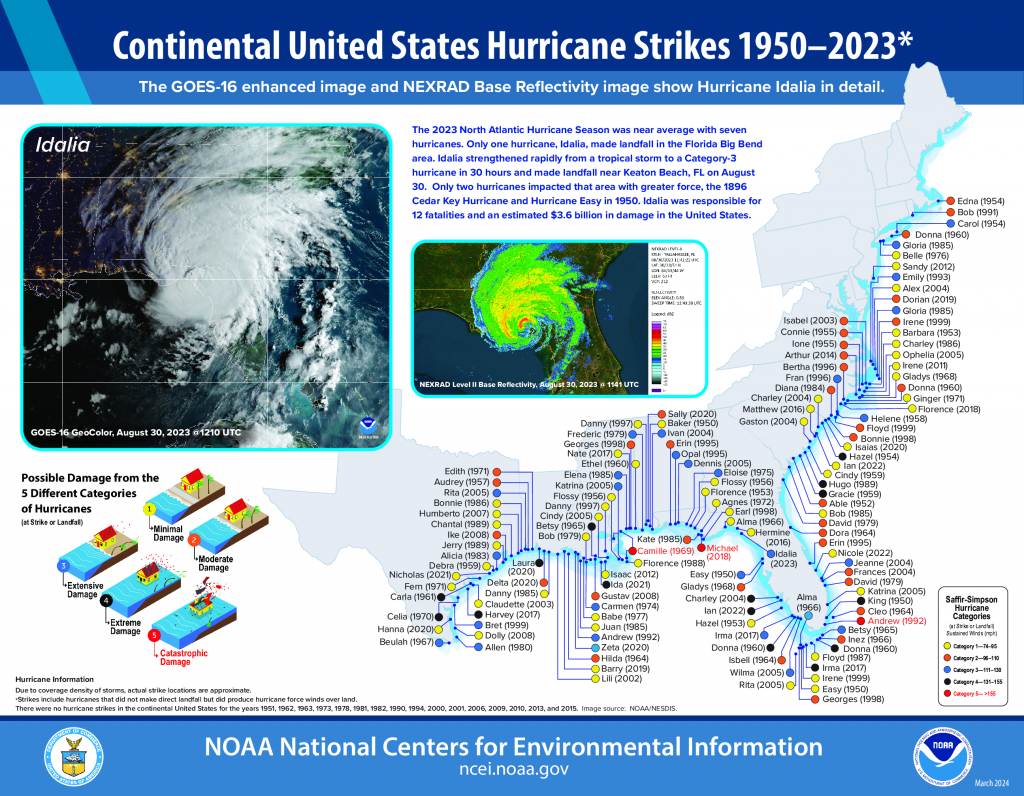
As always, you should get your weather information from a trusted source, especially when dealing with tropical systems. Much like with snowstorms in the winter, there will be plenty of hype and exaggeration on Twitter and Facebook, as well as people posting doom and gloom maps showing how a thunderstorm near the coast of Africa will develop into a Category 5 storm and head right for the East Coast in the next 2 weeks. We’re not among that group, we give you facts and our best forecasts, without any hype. It’s always best to prepare ahead of the season. Chances are, you won’t have anything to worry about, but in case you do, it’s always good to be prepared.